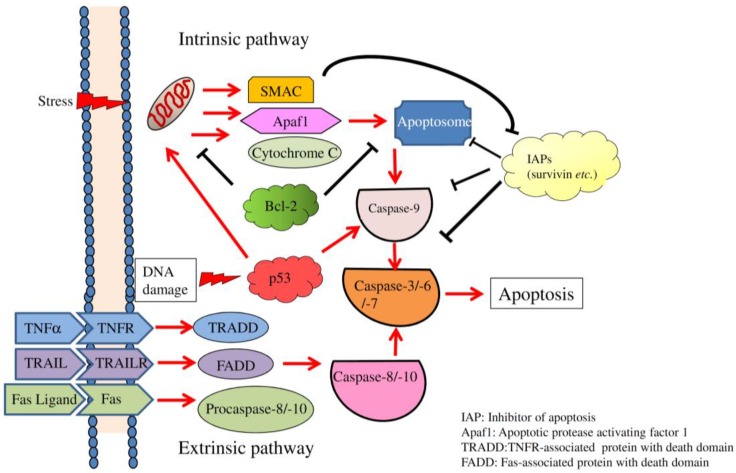Figure 1.
Intrinsic and extrinsic apoptosis pathways in mammalian cells. Environmental stimuli induce DNA damage or other cell stress which induces the release of second mitochondria-derived activator of caspase (SMAC), Apaf1, and cytochrome C from damaged mitochondria to form apoptosome. The presence of SMAC counteracts the repressive effect of inhibitor of apoptosis proteins, such as survivin on activate caspase-3 which acts the executer of intrinsic pathway. The extrinsic pathway is triggered by the binding of pro-apoptotic receptors and corresponding ligands that leads to the formation death-inducing signaling complex and subsequent activation of the downstream procaspases-8 and -10. TNF, tumor necrosis factor; TNFR, TNF receptor; TRAIL, TNF-related apoptosis-inducing ligand; TRAILR, TRAIL-receptor.

